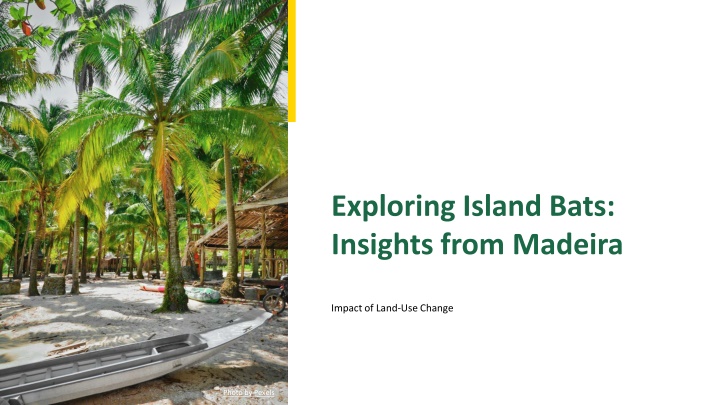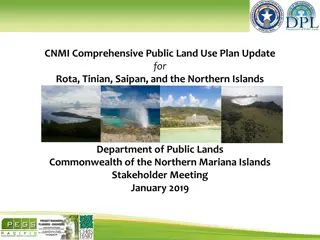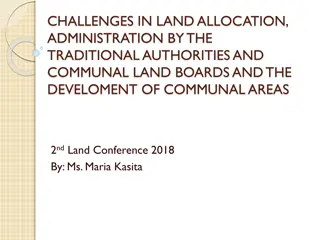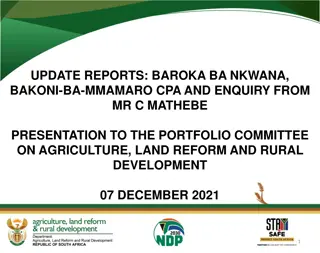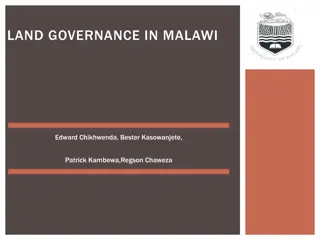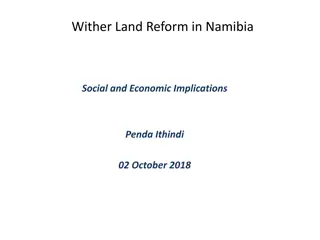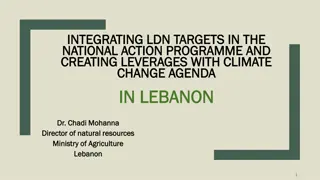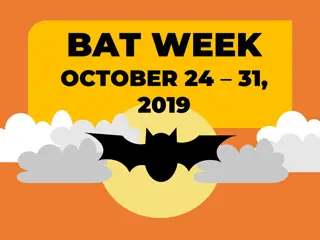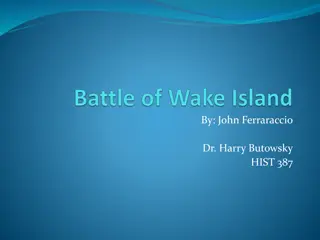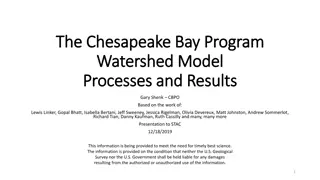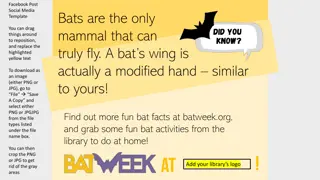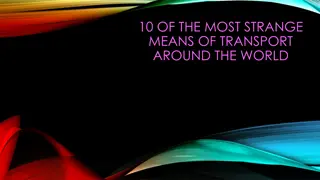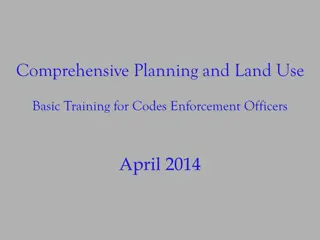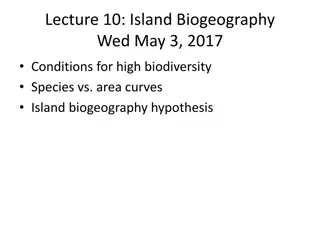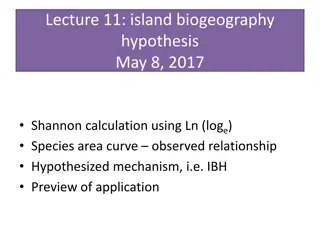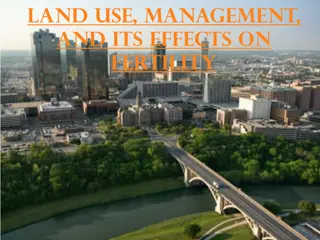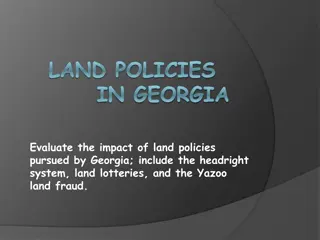Island Bats: Insights from Madeira - Impact of Land-Use Change
Key insights into the unique bat species thriving on Madeira Island, their ecological importance, the impact of human activities, and conservation strategies in the context of land-use changes. Explore the biodiversity hotspot and the foraging guilds of bats to understand their critical role in maintaining ecosystem balance.
Download Presentation

Please find below an Image/Link to download the presentation.
The content on the website is provided AS IS for your information and personal use only. It may not be sold, licensed, or shared on other websites without obtaining consent from the author.If you encounter any issues during the download, it is possible that the publisher has removed the file from their server.
You are allowed to download the files provided on this website for personal or commercial use, subject to the condition that they are used lawfully. All files are the property of their respective owners.
The content on the website is provided AS IS for your information and personal use only. It may not be sold, licensed, or shared on other websites without obtaining consent from the author.
E N D
Presentation Transcript
Exploring Island Bats: Insights from Madeira Impact of Land-Use Change Photo by Pexels
01 Introduction to Island Bats Table of Contents 02 The Madeira Context 03 Foraging Guilds Defined 04 Impact of Human Activities 05 Conservation Importance 06 Technological Innovations 07 Biodiversity Hotspots 08 Actionable Steps 09 Conclusion & Call to Action 10 Thank You!
1 Introduction to Island Bats Key Species Overview Over half of bat species thrive on islands due to their unique adaptations and dispersal capabilities over water. Among these, approximately 25% are endemic, meaning they are foundnowhere else on Earth. Islands often host the only native mammal species, playing a crucial role in their ecosystems. However, 60% of these island-restricted bats are currently under threatfrom human activities. Photo by Pexels
2 The Madeira Context Home of Unique Bats Madeira Island is part of the Macaronesian biodiversity hotspot, hosting specific bat species vital for ecological balance. Notable endemic species include Pipistrellus maderensis and the subspecies Nyctalus leisleri verrucosus. These bats occupy distinct foraging niches and contribute to pest control, showcasing their ecological importance. Understanding their habits is critical in conserving these unique species against anthropogenic threats. Photo by Pexels
3 Foraging Guilds Defined Diverse Feeding Strategies Islands host various foraging strategies among bats: edge space, open space, and narrow space foragers. Each guild utilizes different habitats and resources, highlighting the ecological diversity of bat communities. This specialization is crucial for ecosystem functioning and maintaining biodiversity. Awareness of these guilds helps prioritize conservation efforts effectively. Photo by Pexels
4 Impact of Human Activities Land-Use Changes Explored Human-induced land-use changes are rampant, influencing bat distribution and habitatquality in Madeira. To assess this impact, an island-wide bioacoustic survey was implemented using autonomous sensors. This innovative approach allows researchers to gather unbiased data on bat activity patterns across various landscapes. Understanding these patterns is vital for developing effective conservation strategies. Photo by Pexels
5 Conservation Importance Bats in Ecosystems Bats play a significant role in pest suppression, benefiting both agriculture and natural ecosystems. Their presence indicates a healthy environment, making them crucial to biodiversity conservation. Protecting bat habitats ensures not only their survival but also the well-being of entire ecosystems. Implementing conservation measures is urgent given the rising threats posed by urbandevelopment and agriculture. Photo by Pexels
6 Technological Innovations Bioacoustic Survey Methodology Low-cost autonomous sensors have revolutionized how we study bat populations and their behaviors. These devices allow for continuous monitoring, providing rich datasets without human interference. Technological advancements enable more precise conservation strategies tailored to the needs of these species. Embracing technology enhances our ability to understand and protect biodiversity. Photo by Pexels
7 Biodiversity Hotspots Role of Macaronesia Macaronesia, including Madeira, is recognized for its exceptional biodiversity and numerous endemic species. Conserving these areas is essential not just for bats but for countless other flora and fauna. Protecting biodiversity hotspots is a global priority, necessitating international collaboration and commitment. These efforts will ensure sustainable futures for the unique ecosystems they harbor. Photo by Pexels
8 Actionable Steps What Can Be Done? Raising awareness about the significance of bats can foster community support for conservation efforts. Implementing land-use policies that prioritize wildlife habitats is essential for sustainable development. Encouraging eco-friendly practices in agriculture can mitigate impacts on bat populations. Collaboration between researchers, policymakers, and communities is crucial for success. Photo by Pexels
9 Conclusion & Call to Action Unite for Biodiversity The health of island ecosystems depends on the survival of endemic bats and their habitats. Collective action is needed to combat the threats facing these invaluable species. By working together, we can ensure the persistence of biodiversity on islands like Madeira. Join the movement for bat conservation today! Photo by Pexels
10 Thank You! Let s Protect Our Bats! Thank you for your attention and commitment to understanding and conserving the unique bat species of Madeira. Together, we can make a difference for our biodiversity and ecosystems. Feel free to ask questions or share your insights on this important topic. Photo by Pexels
